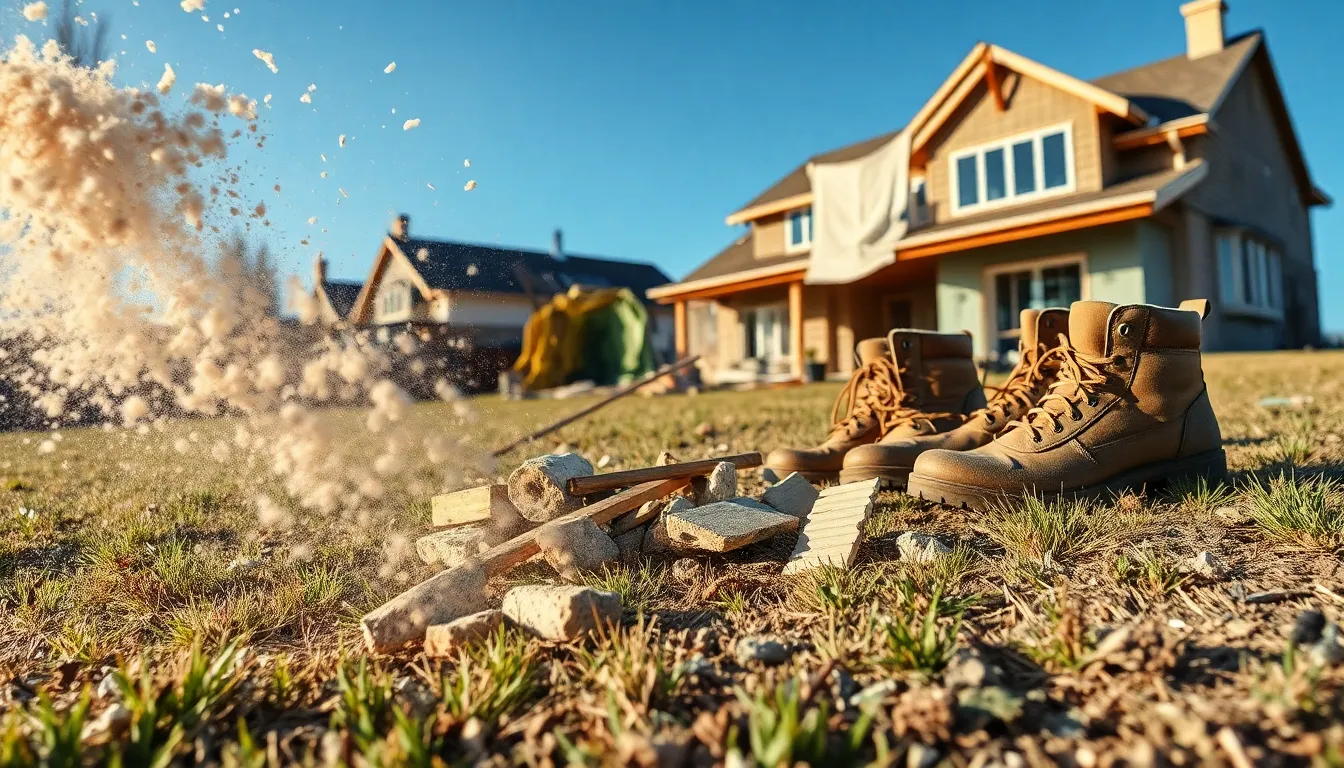Dust and debris are often overlooked aspects of real estate, but they can significantly impact property values, health, and aesthetic appeal. Understanding what dust and debris are, their sources, and their potential effects on real estate can empower homeowners, realtors, and investors to make informed decisions. In this text, we will investigate into these topics, providing practical insights and tips for effective management in real estate transactions.
Table of Contents
ToggleWhat Is Dust And Debris?

Dust and debris comprise tiny particles that accumulate in environments, often unnoticed until they present a problem.
Dust typically consists of a mixture of materials such as soil, plant pollen, human and animal hair, ash, and minerals. It is often light enough to become airborne, which allows it to spread throughout indoor and outdoor areas, exacerbating allergy issues and other health concerns.
Debris, on the other hand, refers to larger fragments of material, such as broken glass, wood chips, or construction remnants. This accumulation often results from renovations, construction activities, or natural disasters.
Both dust and debris can harbor pollutants and allergens, making it vital for property owners to address them proactively.
Sources Of Dust And Debris In Real Estate
In the real estate industry, various sources contribute to the accumulation of dust and debris, impacting properties at different stages.
- Construction Sites: New builds or renovations generate significant debris, including scraps of lumber, drywall, and dust from various materials used in construction.
- Landscaping Activities: Leaves, soil, and other organic matter often accumulate around properties, contributing to outdoor dust levels.
- Indoor Activities: Everyday activities such as cooking, cleaning, and personal grooming introduce dust into the home. Common sources include pet hair, dust from clothing, and particles from household items.
- Weather Events: Storms, wind, and natural disasters can disperse additional debris, including branches, dirt, and more, particularly in areas subject to severe weather.
Understanding these sources equips real estate stakeholders with the knowledge to mitigate their effects effectively.
Effects Of Dust And Debris On Properties
The presence of dust and debris can significantly impact properties, both physically and financially.
- Aesthetic Damage: Dust accumulation can dull paint finishes, tarnish fixtures, and muffle the overall look of a property, making it less appealing to potential buyers.
- Health Hazards: Dust and debris can contribute to poor indoor air quality, which may lead to respiratory issues or exacerbate allergies for inhabitants. Particularly sensitive groups, such as children and the elderly, can be negatively affected.
- Structural Deterioration: Accumulated debris can lead to mold growth, attract pests, and even cause physical damage over time. Items left unchecked outside, like fallen branches, can also impair the structural integrity of a home.
- Market Value Impact: Buyers often shy away from properties that appear neglected. Significant dust and debris can deter qualified buyers, leading to reduced offers or extended time on the market.
Managing Dust And Debris During Real Estate Transactions
Effectively managing dust and debris during real estate transactions is crucial for ensuring a smooth process. Here are some strategies:
- Pre-Inspection Cleanliness: Properties should be thoroughly cleaned before listing to enhance visual appeal and create a welcoming atmosphere. This includes exterior pressure washing and indoor deep cleaning.
- Regular Maintenance: Establish a routine maintenance schedule that includes dusting hard surfaces and vacuuming air ducts to minimize dust accumulation.
- Post-Inspection Cleanup: After showings or open houses, a quick cleanup can eliminate residual dust and improve the property’s appearance for future viewings.
- Communication with Contractors: During renovations, clear communication with contractors about the management of dust and debris can lead to better practices and a more organized workspace.
Best Practices For Cleaning And Maintenance
Implementing best practices for cleaning and maintenance can minimize dust and debris in a property. Here are some recommendations:
- Dust Regularly: Use microfiber cloths for dusting surfaces more effectively, capturing particles rather than spreading them around.
- Invest in Quality Air Filters: Installing HEPA filters in HVAC systems can significantly reduce airborne particulates and improve indoor air quality.
- Limit Clutter: Keeping surfaces clear promotes easier cleaning and minimizes places where dust can settle.
- Use Mats and Rugs: Placing mats at entryways can catch dust and dirt before it enters the home, helping keep indoor spaces clean.
- Schedule Professional Cleanings: Hiring professional cleaning services periodically can provide a deeper clean that may be difficult to achieve as a DIY project.
The Importance Of Environmental Considerations
Environmental considerations are vital when discussing dust and debris in real estate. Properties situated near busy roads or industrial areas are likely to experience higher levels of dust accumulation due to pollution and traffic. Conversely, areas with ample vegetation might display different debris types, such as organic matter from trees and plants.
- Sustainability Initiatives: Real estate professionals should advocate for sustainable practices, such as using eco-friendly cleaning products or materials that minimize dust production.
- Community Impact: Real estate stakeholders can contribute to community health by adopting practices that lessen dust pollution, like maintaining green spaces and supporting local environmental initiatives.
- Legal Compliance: Property owners should be aware of and comply with local regulations concerning construction and environmental impact, ensuring responsible handling of dust and debris.
Conclusion
To conclude, dust and debris are critical considerations within the realm of real estate. Their sources span construction activities to everyday living, each possessing the potential to impact properties negatively. By understanding these elements, real estate stakeholders can adopt proactive measures for management and maintenance, ensuring cleaner, healthier spaces. Investing time and resources in cleaning and dust management not only enhances property value but also promotes a safer, more pleasant living environment for all.



